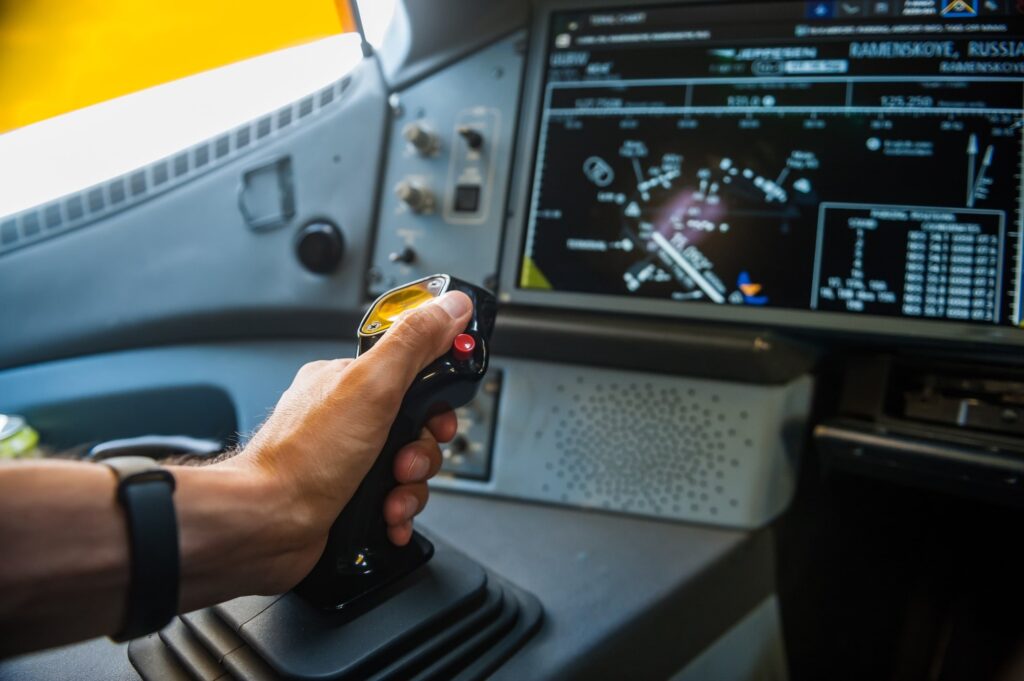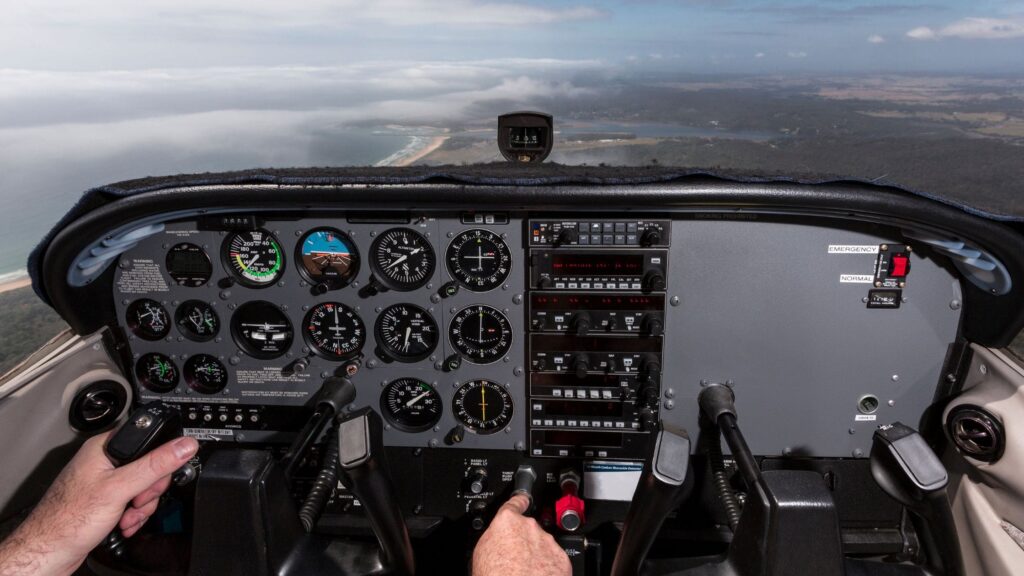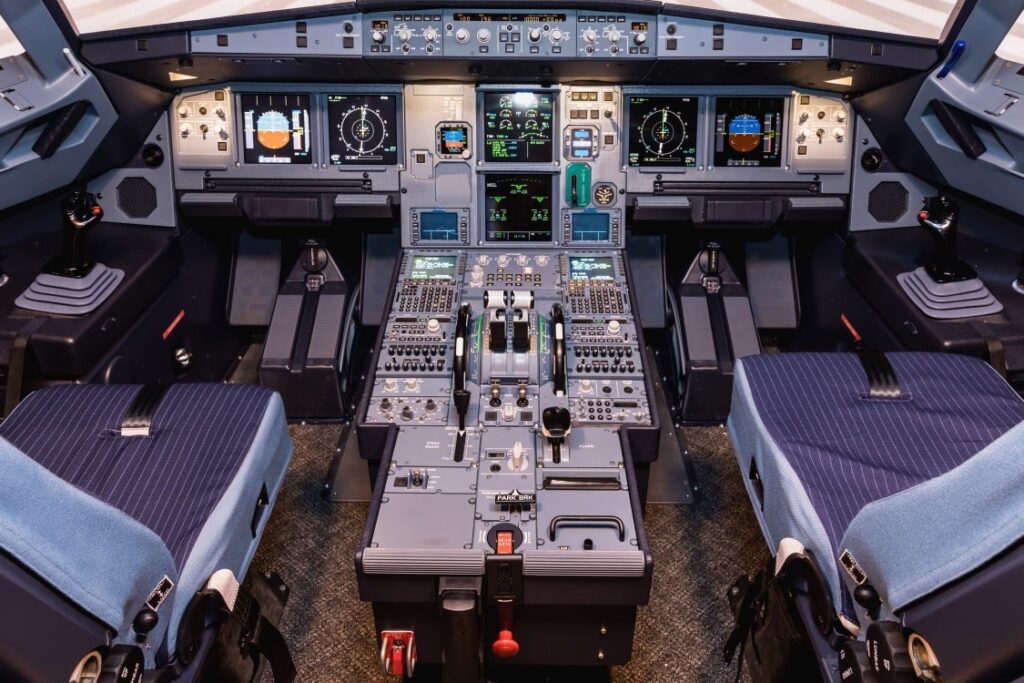Have you ever wondered if being left or right handed affects a pilot’s ability to fly an aircraft?
I recently flew on an Airbus 320, and when I peaked into the cockpit, I noticed that the flight sticks used to control the plane weren’t centered in front of the pilot, but we’re side-sticks located to the left side of the Captain and the right side of the First Officer.
This struck me as odd, since most people in the world are right handed, so why would the pilot in command always use their left hand?
And further more, my new T-Flight HOTAS yoke I bought for Flight Simulator was right-handed by default. So I became quite curious to learn the history of cockpit seating locations and how handedness might impact piloting an aircraft.

In this blog post, we’ll delve into the impact of handedness on flying and explore why airline captains typically sit on the left side of the cockpit, even though it might seem counter-intuitive.
Handedness and the Challenge of Flying
After extensive research and conversations with pilots from both left and right-handed backgrounds, it has become clear that handedness does not have a measurable impact on the difficulty of flying.
While the flight deck may present occasional awkward movements for pilots regardless of their dominant hand, there is no conclusive evidence to suggest that left-handed pilots face any additional severe challenges when flying.
The best anecdotal explanation of this I’ve received is to imagine yourself driving a manual transmission car in America. In this case you would largely be controlling the steering wheel using your left hand while shifting with your right hand.
This is quite similar to how a pilot would control the yoke with their left hand, and the throttle with their right hand.
The movement on the yoke (control stick) is done more with your arm/wrist, and doesn’t necessarily require any intricate finger dexterity, which is what would usually complicate things when working with your non-dominant hand.
Left Seat, Right Seat: A Pilot’s Journey

The journey of a pilot begins as a student aviator, sitting in the left seat while their instructor occupies the right seat.
Throughout their career progression, pilots transition from the left seat to the right seat as flight instructor or first officer, and then back again, eventually serving as a captain.
During this journey, pilots must learn to fly from both seats and perform various tasks using their dominant and non-dominant hands.
Flight Deck Layout and Its Impact on Handedness
Over the years, flight deck layouts have evolved significantly.
From basic stick controls in early aircraft to modern yoke and control column styles, cockpit designs have come a long way.
Different aircraft manufacturers, such as Cessna, Piper, Diamond, Cirrus, Boeing, Embraer, and Airbus, employ various control column styles and placements, shaping the pilot’s experience in the cockpit.
Pilots must learn to fly a variety of configurations from either side of the cockpit.

Historical Perspective: The Influence of Early Rotary Engines
After all my research, I was still curious how this all began though. Here’s what I found:
The tradition of having airline captains sit on the left side of the cockpit can be traced back to the early days of aviation, when counterclockwise propeller rotation in rotary engines led to standard maneuvers using left turns.
Basically, planes with these propellers have a natural tendency to turn left, so most planned airplane turns and patterns were left-bound to take advantage of that.
Basically, it was a physics phenomenon that influenced the seating arrangement for the prime or most experienced pilot to have a better view out of the left window, once airplanes grew large enough to have side-by-side pilots.
It seems this particular physical phenomenon would not impact a jet aircraft, but nonetheless the tradition has remained.
In Conclusion
The tradition of airline captains sitting on the left side of the cockpit is a fascinating aspect of aviation history that still persists today, serving as a reminder of the early days of flight and the pilots who paved the way for modern aviation. While it was originally influenced by the left-ward turning tendencies of rotary propellers, the left side captain cockpit set up remains to this day.
